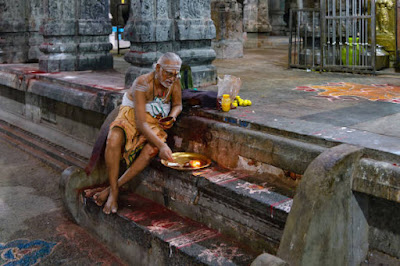The most well-known name for the ancient Hindu social system in which groups are placed in a hierarchy of rank based on the perceived purity of each group's customary profession.
The term "caste" comes from a Portuguese word that means "chaste."
Different groups in Indian culture maintained their distance from one another, especially while dining and marrying, according to the Portuguese.
This social phenomena was referred to as "caste" by them.
The most significant notion for social organization among Hindus is known as the jati ("birth").
A person is born into a jati and becomes a member of it.
The jatis were typically split into groups based on their traditional occupations, which were supposed to be done only by that jati.
The social standing of a jati was usually determined by its profession, and jatis who worked as latrine cleaners or tanners were considered to be polluted by their work.
The body was used to represent society as a whole, with various jatis corresponding to different bodily parts.
To keep one group separate from the others, rigorous regulations were used to designate and enforce these distinctions in rank.
The most stringent rules applied to marriage, and members of a jati would only marry inside that group in the past.
It was almost as though the jatis were considered a distinct "species" of human beings who needed to be kept apart.
Although there is currently much more intermarriage than in the past, marrying within one's jati is still the ideal.
The four main social classes (varna) outlined in the dharma literature:
- brahmin (priest),
- kshatriya (warrior-king),
- vaishya (merchant),
- and shudra (slave) are the best-known model for organizing Indian society (servant).
The multitude of distinct jati groupings, on the other hand, makes the social order much more complicated.
A small hamlet may have dozens of jatis, each providing a specific function, while a metropolis may have hundreds of jatis, some of which are extremely specialized.
There are various brahmin jatis even within the brahmin varna (for example, Saraswat, Chitpavan, Kanyakubja, and Kanaujia).
The situation is much more complicated for other varnas.
Some jati groups, for example, lie between the vaishya and shudra varnas, while modest jati clans with political success may claim kshatriya ancestry.
The social standing of the same jati may differ from area to region, depending on whether they are a majority or minority of the population, or whether they are a land-holding group.
The status of a group is typically determined by local circumstances, as it is in most aspects of Hindu life; but, in the last fifty years, such status determinations have also been influenced by changes in Indian culture, which have tended to loosen social differences.
See McKim Marriot, “Hindu Transactions: Diversity Without Dualism,” in Bruce Kapferer (ed.), Transaction and Meaning, 1976, for more details.










